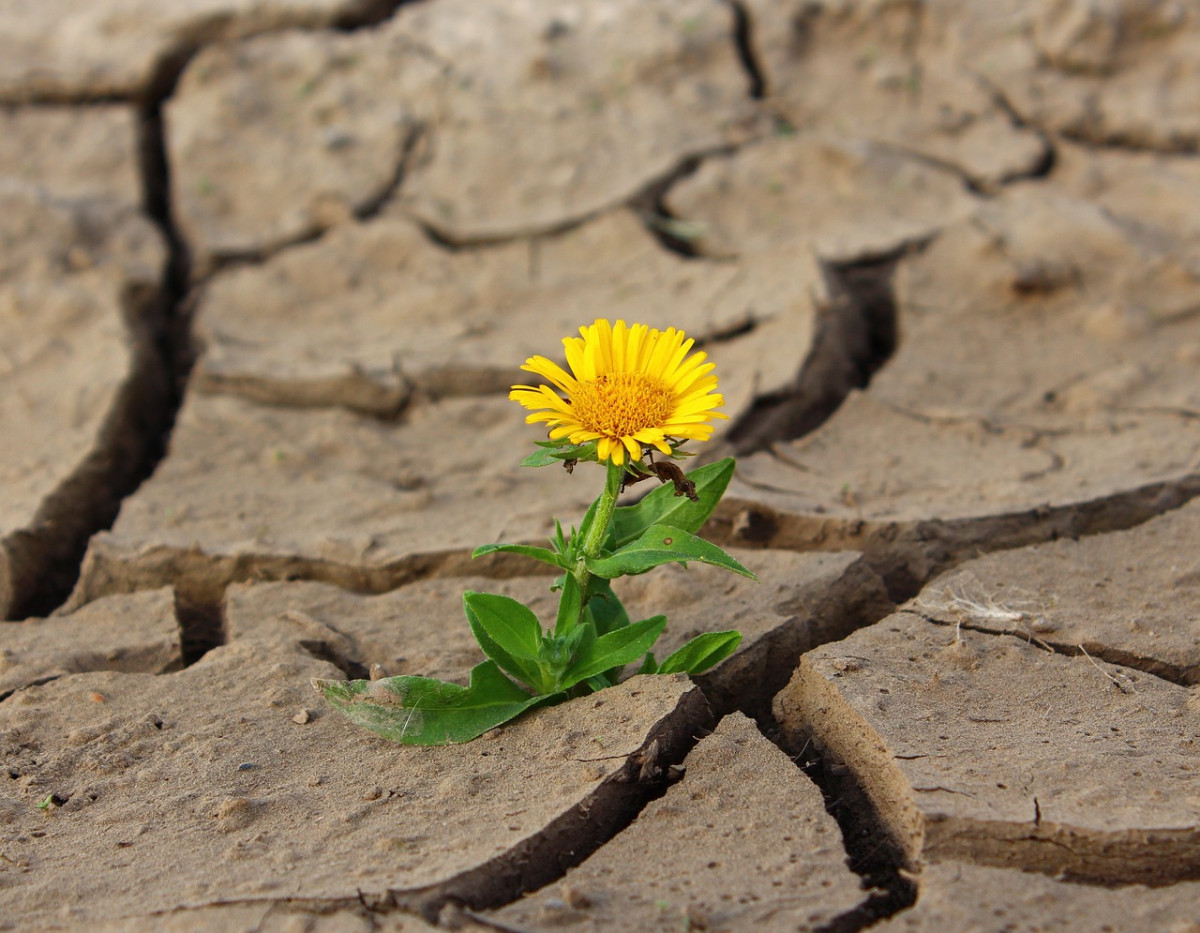Central Asia's Looming Crisis: Walking on Thin Ice

Currently, the water problem in the World is worsening. Rivers and lakes worldwide are drying up, and dams are disappearing. This issue has escalated to the point where scientists warn that if not addressed promptly, it could lead to global hunger in the future.
The Head of State Kassym-Jomart Tokayev at the opening of the first session of the Parliament of the VIII convocation addressed the water issue. The President emphasized the need to ensure water security and instructed the government to take action. He stressed the importance of effective water resource management and protection, advocating for a scientific approach, innovative practices, and international best practices.
“Water security is strategically important. The water issue may aggravate in the medium term. Therefore, to avoid dealing with the consequences, we need to eliminate the causes of the potential water crisis today. Currently, the Government is developing the draft of a new Water Code. It should focus on effective water management and protection based on a scientific approach, innovations, and best international practices”, said Mr Tokayev.

t.me/aqorda_resmi
In Kazakhstan, approximately 65 percent of water is used for agriculture, with losses reaching 60%. Therefore, it is necessary to switch to a new tariff policy. 1If we do not do it now, the situation will aggravate. Digitalization of water supply facilities and the entire water sector is of fundamental importance”, said President.
Kazakhstan plans a large-scale reconstruction of irrigation canals, the transition to autonomous management of hydraulic structures, automation of water metering, and the introduction of quotas for the use of water resources.
President Kassym-Jomart Tokayev at the Plenary Session of Astana International Forum mentioned the importance of water supply in Central Asia. According to him, the region is one of its front lines while facing climate change. Even if the world manage to restrict the global temperature increase to 1.5 degrees Celsius by the year 2050, a scenario that seems less and less probable, we can anticipate a temperature rise of approximately 2 to 2.5 degrees Celsius in Central Asia. Consequently, local surroundings will undergo significant changes, specifically turning into arid and desert-like conditions as water scarcity becomes prevalent.

© Pixabay.com
“We must be prepared for greater difficulties. We are really concerned about the scarcity of water resources. Droughts and floods in Central Asia will cause damage of 1.3 percent of GDP per annum, while crop yields are expected to decrease by 30 percent, leading to around 5 million internal climate migrants by 2050.Our glacier surface has already decreased by 30 percent. The two great rivers of our region - the Syr Darya and Amu Darya - will lose an estimated 15 percent by 2050. To prevent environmental disaster in the region, we urge that more resources to be allocated to support the International Fund to Save the Aral Sea. Water and climate change are closely linked. Central Asia is a region where water security can be achieved only through close cooperation and efficiently tailored joint measures. To discuss these and other climate related issues in the region, I propose to establish a project office of the Central Asian countries in Almaty and to hold a Regional Climate Summit in Kazakhstan in 2026 under UN and other international organizations’ auspices”, said Mr Tokayev.
It is worth recalling that the United Nations issued a forecast about water scarcity in Kazakhstan a year ago. By 2030, the country's ninth region is projected to experience nutrient deficiencies, potentially leading to the transformation of the Great Steppe into a desert. The UN report highlights that only 2.8 percent of the country's area is covered by rivers and lakes, making Kazakhstan heavily reliant on rivers from neighboring countries.
Presently, two-thirds of Kazakhstan's territory is already classified as desert or desert region. Nearly half of the country's water resources come from neighboring nations. Consequently, cooperative management of transboundary rivers is crucial. The UN Development Program underscores that the region has been significantly impacted by climate change in recent years, with rapid weather fluctuations, frequent droughts, worsening water shortages, and the potential for resource competition.
About 71 percent of the Earth's surface is covered by water, but unfortunately, a staggering 97 percent of it is salty. The remaining three percent consists mainly of glaciers found in snow-capped regions and high peaks such as Antarctica and the Arctic. Surprisingly, less than 1 percent of the water available to us is suitable for drinking and sustaining ecosystems.
The global volume of fresh water used by mankind each year is a staggering 4.3 trillion square meters. Interestingly, 70 percent of this water is utilized for agricultural purposes, 19 percent is allocated to industrial activities, and the remaining 11 percent is dedicated to daily domestic needs. It's important to note that these figures represent a global average, as water consumption patterns vary significantly between countries. For example, in the United States, 37 percent of water consumption is attributed to industrial production, while 40 percent is used for agriculture. In India, over 90 percent of water is utilized for agricultural irrigation, and in China, approximately 65 percent supports agricultural practices while 22 percent serves industrial needs. Clearly, the demand for water remains high across nations.
Water is undoubtedly essential for human survival, but as populations continue to grow and water resources become scarcer, challenges arise. Over the past century, the world's population has quadrupled, resulting in a six-fold increase in the demand for essential resources like water and food. The situation is further exacerbated by diminishing water supplies.
The impacts of water scarcity are already being felt in various regions. For instance, in 2018, Cape Town in the Republic of South Africa experienced a severe drought, nearly depleting its water resources. City authorities implemented strict water usage restrictions, an unprecedented measure. Thankfully, rainfall eventually arrived, saving the city from disaster. However, the drought cost the region an estimated $400 million.
Based on McKinsey's data, it is projected that the size of the world's river basins will increase by 10 percent by 2030 and 25 percent by 2050. According to the United Nations, around a quarter of the world's population may face water shortages by 2050. Furthermore, the World Bank predicts that the shortage of essential resources, including water, could reduce global GDP growth by 6 percent by 2050.
Given these forecasts, it becomes evident that water-related disputes will likely escalate in the future. Currently, the use of international rivers is already a contentious issue, with some countries failing to honor agreements they have signed.
To address such disputes, the Convention on the Protection and Use of Transboundary Watercourses and International Lakes regulates conflicts over rivers and lakes between states. This international document was adopted in Helsinki, Finland, on March 17, 1992, and went into effect in 1996. Kazakhstan, Uzbekistan, Turkmenistan, and Russia have ratified this convention in the Central Asian region. The agreement includes mechanisms to facilitate the implementation of decisions made.
Despite the existence of this convention, numerous unresolved issues persist. Upper riparian states continue to exploit rivers for economic purposes, often utilizing water as a tool for political influence. The Jordan River basin in the Middle East is a prime example, with Jordan, Palestine, and Israel constantly engaged in disputes over water usage.
Another long-standing water conflict exists between Egypt and Ethiopia concerning the famous Nile River. The two countries have struggled to effectively share the river's water for centuries. In 2015, they reached an agreement to construct a large dam, but construction has faced numerous delays due to misunderstandings. If completed as planned, the dam would become operational in 15 years, providing water to Egypt, Ethiopia, and even Sudan.
Currently, the world relies heavily on water from approximately 410 river basins. Alarmingly, about 90 of these basins are operating at dangerous levels, with annual water consumption exceeding the sustainable limits by 40 percent. Remarkably, more than half of the dangerous river basins are located in China, India, and the United States.
Water scarcity could have severe implications for industries as well. For instance, during the 2015 drought in Brazil, General Motors spent $2.1 million on water and $5.9 million on electricity. Similarly, in that same year, China mandated a 10 percent reduction in water consumption for paper production enterprises, resulting in an increase in paper prices.
Recognizing the growing importance of water as a finite resource, many companies have already started employing water-efficient practices. They are strategically locating their factories near water-rich areas instead of concentrating them in specific regions. Apple, for example, has implemented this approach to take advantage of river resources.
While companies are obligated to limit water consumption and seek effective solutions, the problem cannot be fully resolved. This is due to the fact that a significant portion of the world's water resources flows across national borders. One-third of the world's 263 transboundary water basins are shared by multiple countries.
There are approximately 290 agreements and treaties governing transboundary rivers worldwide. While most of these agreements aim to address conflicts, many unresolved issues persist. In 2019 alone, around 50 water-related conflicts occurred globally. Therefore, water policy has become increasingly crucial in today's world.
Central Asia is not exempt from water-related challenges, as the region comprises several transboundary rivers. Asia, often referred to as the "third pole," holds the third-largest reserve of fresh water in the world after the Arctic and Antarctica due to its abundant glaciers. Given that a significant portion of the global population resides in Asia, the region heavily depends on the "white blanket" atop its mountains. However, climate change poses a severe threat to Asia's glaciers, causing them to melt at an alarming rate. Within the next decade, the amount of water flowing into rivers is projected to decrease by 16 percent. Consequently, 14 major rivers and their basins, including the Balkhash, Syrdarya, and Amu Darya, located in Central Asia, could face the risk of drying up in the future.
The joint utilization of the Syrdarya and Amu Darya rivers poses a significant issue for Central Asian countries. The origin of the Syrdarya lies in Kyrgyzstan, while the Amu Darya originates in Tajikistan. Consequently, other Central Asian states depend on the cooperation of Kyrgyzstan and Tajikistan for their water resources. The regulation of water flow remains in the hands of these countries.
Moreover, 25 large and small rivers cross the border between Kazakhstan and China. While the governments of both countries signed an agreement on the use of transboundary rivers in 2001, the fate of rivers like Irtys and Ile is yet to be fully resolved. These rivers hold great significance for Kazakhstan, as 70 percent of their water originates from Chinese territory. Additionally, Chinese authorities are increasing water usage within their borders, driven by the economic development of regions like Xinjiang Uyghur Autonomous Region, where desert reclamation and industrialization are rapidly expanding.
Addressing the water crisis requires immediate and coordinated action at multiple levels. Central Asian countries must prioritize sustainable water management practices, including efficient irrigation systems, water conservation strategies, and the implementation of drought-resistant crop varieties. Investments in water infrastructure, such as reservoirs and water treatment facilities, are essential to store and manage water resources effectively. Moreover, regional cooperation and dialogue among Central Asian nations are vital to develop agreements that promote equitable water sharing and reduce potential conflicts.

© Pixabay.com
International support and collaboration are equally critical. The global community should extend technical and financial assistance to Central Asian countries in their efforts to mitigate the impacts of climate change and build resilience. Collaboration with international organizations, such as the United Nations and the World Bank, can facilitate the exchange of knowledge and best practices, while fostering investments in renewable energy sources and climate adaptation projects.
Time is of the essence. Central Asia cannot afford to delay action in the face of the escalating water crisis. Governments, communities, and the international community must join forces to tackle the challenges head-on, protecting the region's precious water resources, securing livelihoods, and ensuring a sustainable future for generations to come. Failure to act now risks irreversible consequences that could reshape the face of Central Asia for years to come.
 Subscribe to our Telegram channel and be the first to know the news!
Subscribe to our Telegram channel and be the first to know the news!